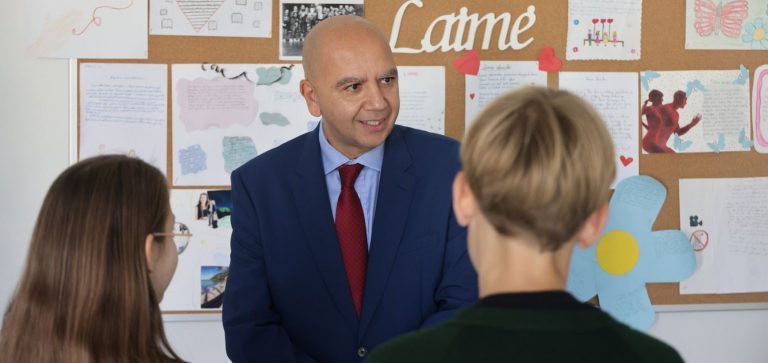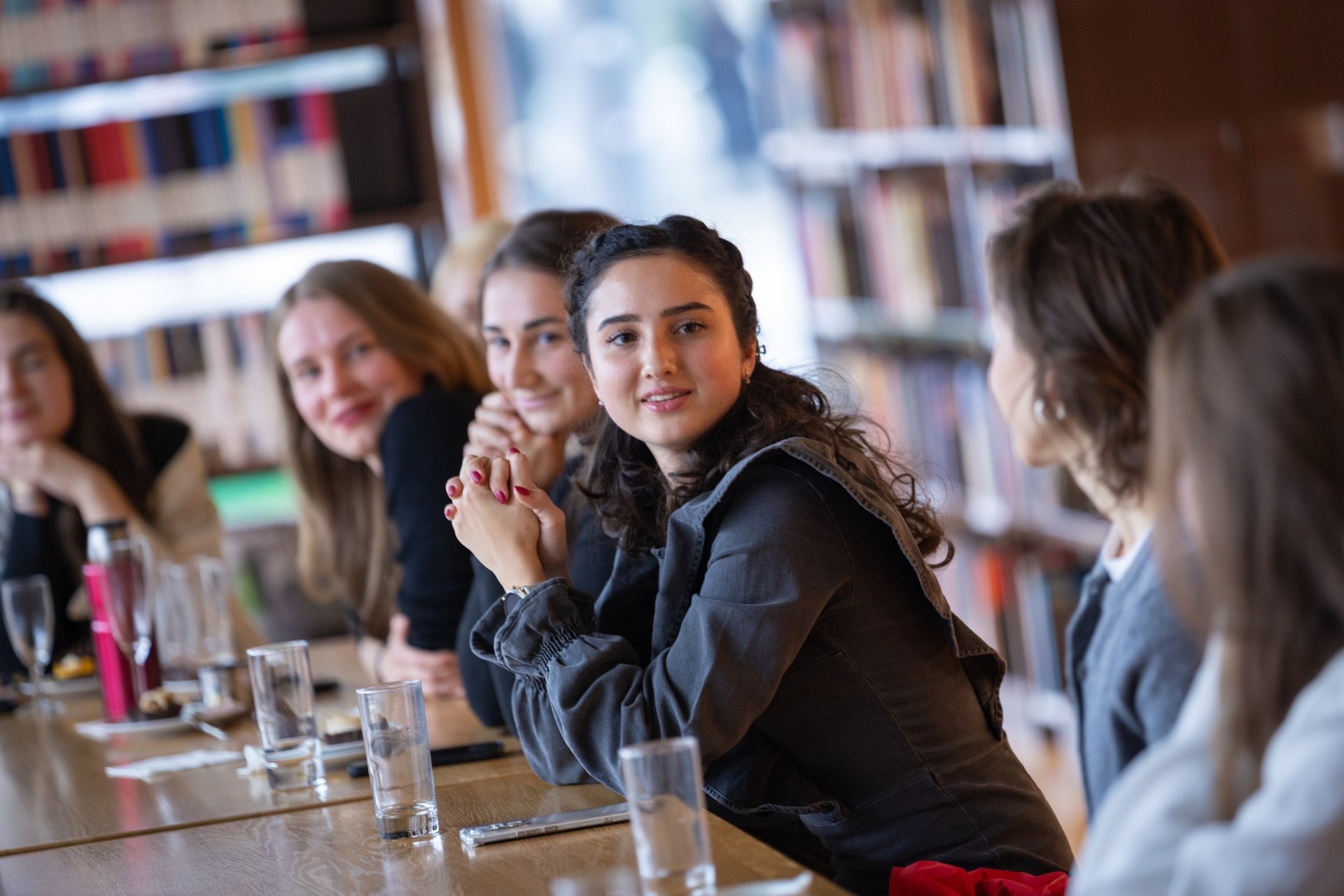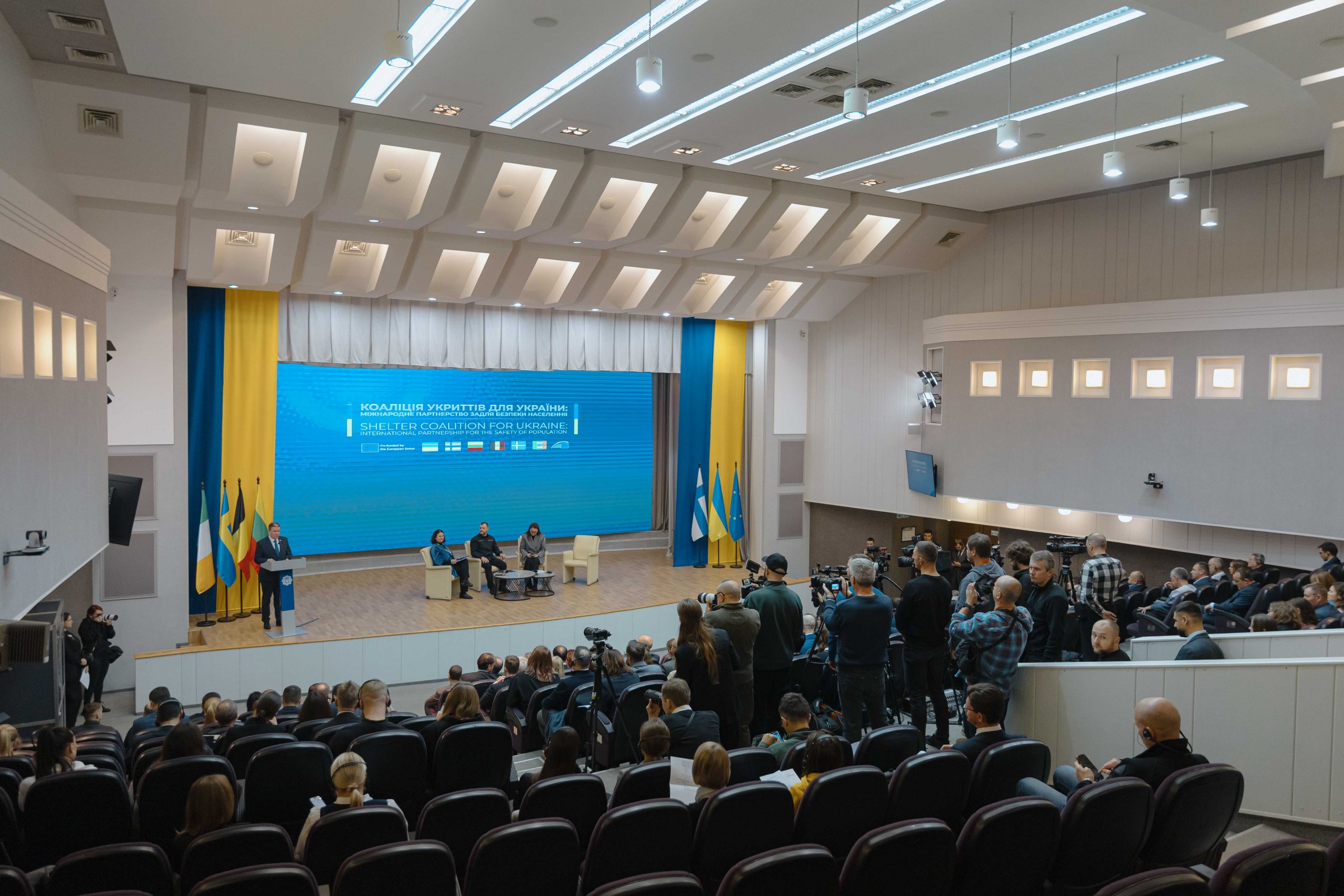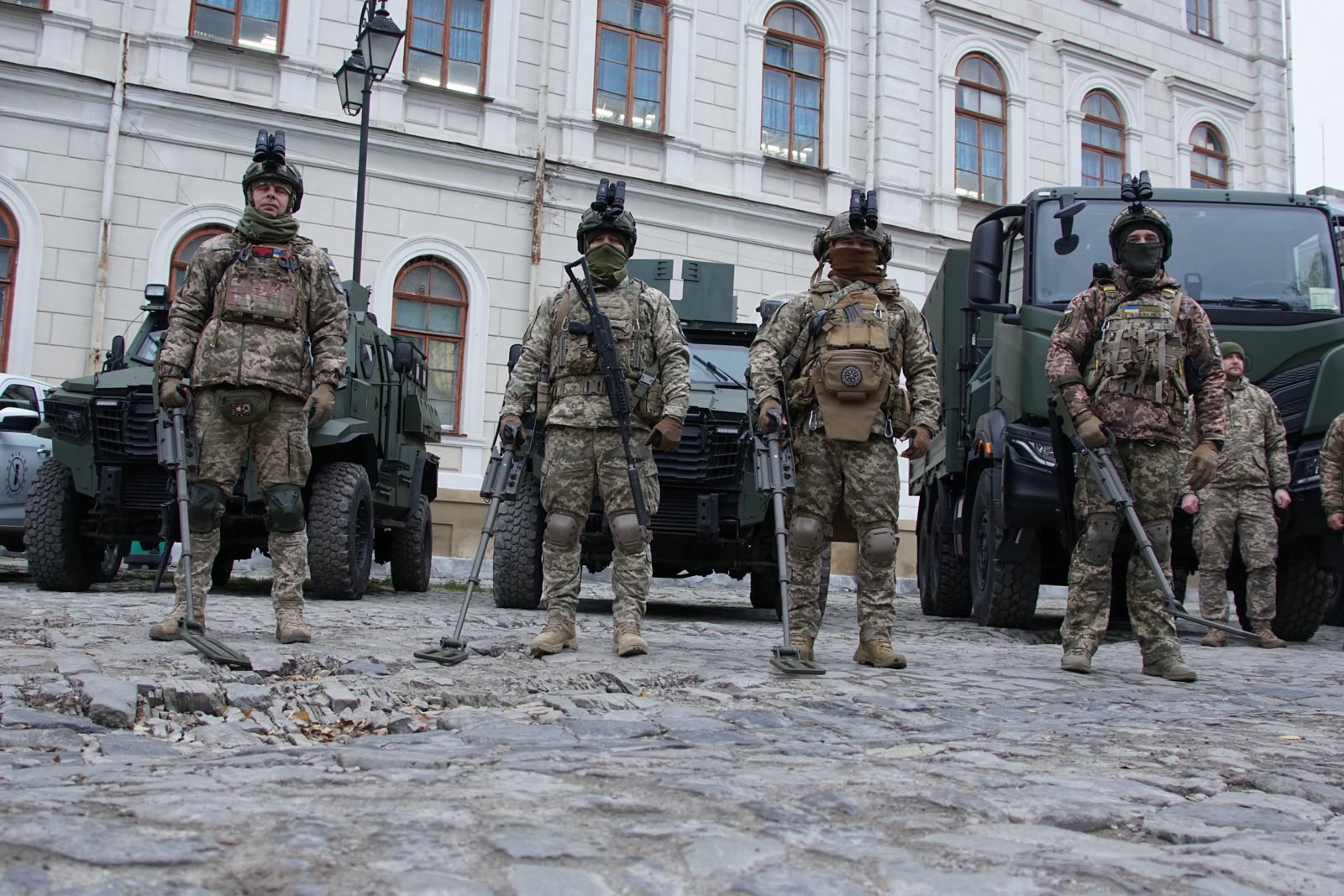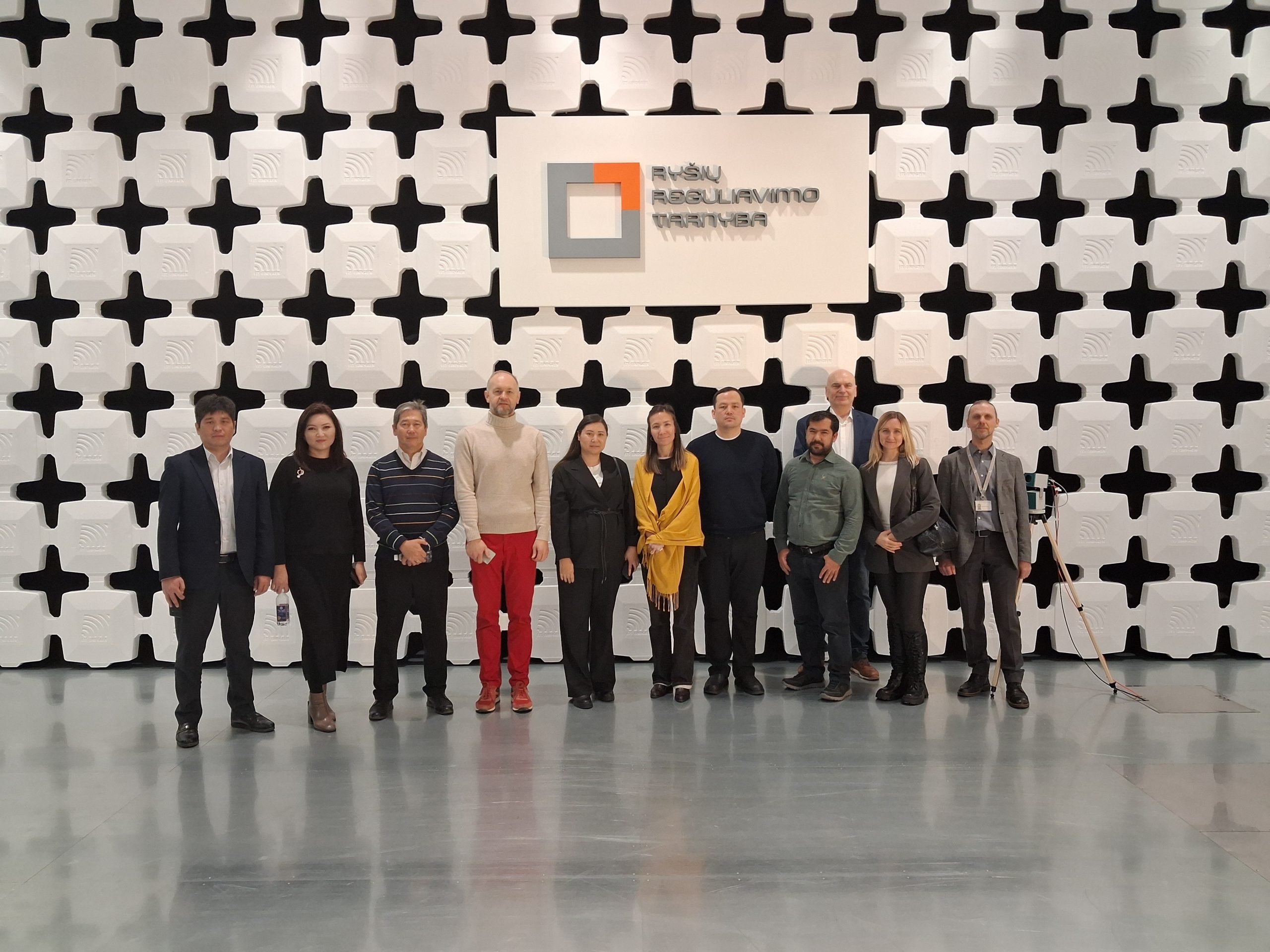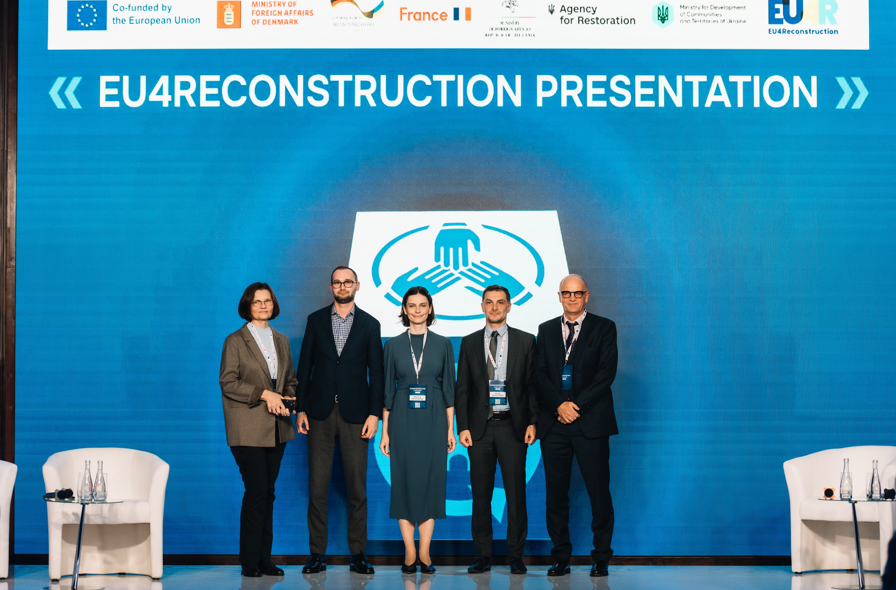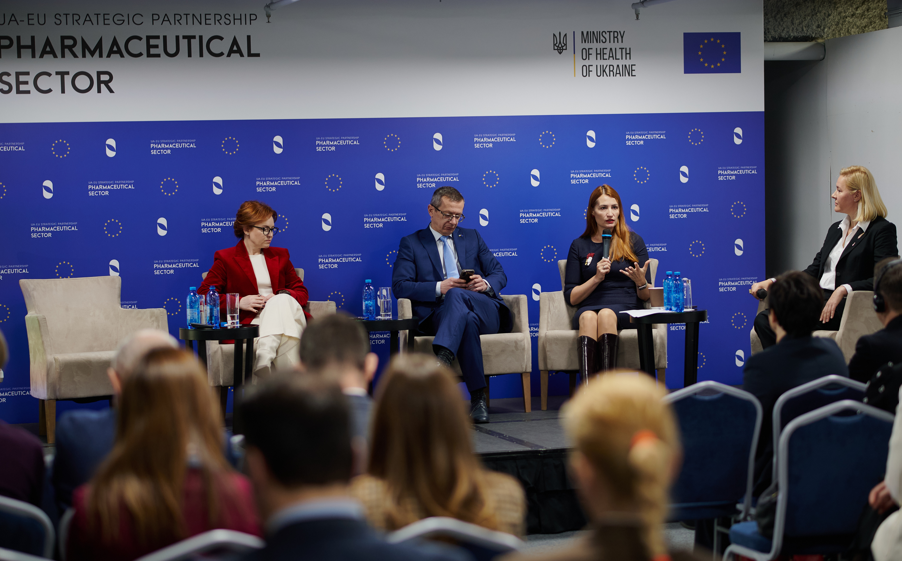“A wonderful kindergarten, a fantastic school in the forest. What you have is unique,” said Tony Bonnici, Chief of Cooperation and Partnerships Section of the United Nations Economic Commission for Europe (UNECE), who travelled from Geneva to Lithuania. He is here to visit the Lithuanian project that won the Public Private Partnerships and Infrastructure Award 2023. The project has built and renovated three educational institutions in the Kaunas district, providing education for more than 500 students. The Lithuanian project was recognized by UNECE for its environmentally and sustainability-oriented solutions, neutral environmental impact, and replicability.
The project was implemented by Kaunas District Municipality together with private partner BaltCap infrastructure fund. The Central Project Management Agency (CPVA) provided financial expert assistance to Kaunas District Municipality, participated in the selection of the private partner and in negotiations.
In an interview with CPVA, T. Bonnici talks about the trends in public-private partnerships (PPPs), the success of the Lithuanian project and the applicability of the project not only within the country, but also abroad.
– Why is the UNECE interested in PPP? What’s your organization’s mission and objectives in this field?
– Historically PPP started more than 20 years ago in France, the United Kingdom, Canada, and later in Australia, Japan and elsewhere. These countries came to UNECE. It was the natural place to go because it was the regional commissions focusing on collecting best practices, preparing guides and some training. UNECE is one of the five UN Regional Commissions. That is how it all started.
Then, around 2008, with the financial crisis, things evolved. We saw that low- and middle-income countries started being attracted to public-private partnerships and they had very little guidance. We tried to share best practices with them, prepare policy recommendations, do training, and build capacity. We were sort of translating what was happening in France, Germany, UK, some other countries.
In 2015, there was a big shift: we set ambitious Sustainable Development Goals (SDGs). This is the most ambitious transformative agenda for saving the planet but also eradicating poverty, reducing inequality and more. We realized that value for money was not the main driver or should not be the main driver for PPPs in support of the sustainable development goals. We also started talking about value for people and for the planet, which meant that the three sustainability pillars, the economic, the environmental and the social, should be treated equally. I am not saying that the environment should come before economics. I am saying that if it makes financial sense, you also need to capture the social and the environmental elements of a project, from the inception.
– Where and why PPP could be the most appropriate tool?
– PPP is equally effective for both economic and social infrastructure. Only the allocation of risks may differ. If the project is generating income, then there is less public sector involvement in terms of the public budget. But you cannot just focus on the roads, on the power generation. You need to do the social infrastructure as well. With the social, the demand risk is entirely or almost on the public side. Then you need the key performance indicators to keep the private companies in check to make sure that the assets are available.
For very small projects, for example, under half a million, use the public budget. PPPs do not have to be used in every case. It’s not going to solve all your infrastructure problems, but it’s a tool. And it has to be used properly.
– How do you see the PPP perspectives and what trends do you notice at this moment?
– Broadly within the region I think there is a shift to do smaller projects and I was happy to see that the majority of projects in Lithuania are small projects. We keep hearing how this is challenging, that you shouldn’t do anything under 10 or 20 million because it’s too costly, too expensive. But in order to achieve the sustainable development goals, we need to do the large projects, the big roads, the big power plants, but we also need to do the smaller projects. I see that there is more sensitivity towards the environment and towards involving stakeholders. It seems to be a shift, perhaps not enough.
Another trend that I see is that it used to be the case probably up until 10 years ago that there is a lot of money but not enough bankable projects around the world. And I’m not so sure about this anymore. Maybe the countries where these projects are risky from an investment perspective, but not because there are no projects. For example, we did an exercise this time last year and we came up with like 30 climate resilient projects in the whole region, which are ready for funding and finance. And the challenge of course is to find investors to put the funds in those countries. Money needs to go to high-risk countries if we want to achieve sustainable development goals.
We are halfway on the SDGs agenda, starting in 2015 until 2030. We need to rescue the sustainable development goals because only about 12% are on track to be achieved with the current pace. So, we need to increase the pace and financing remains the key challenge. There is not enough public money around to pay for the SDGs. That’s why we need the private sector to contribute. And I think the challenge from a policy perspective is what policy interventions governments can do to incentivize private finance to go into countries where investment risks are high.
– What were the specific features of Lithuanian schools’ project? Why has it attracted your attention?
– You did a fantastic job there. From the media perspective the video is top notch. But it’s not a marketing ploy. If you look at the facts, you see that from an environmental sustainability and climate resilient perspective, there was, for example, recycling of demolition waste. It was reused in the extension of the rehabilitation of the schools. Another feature was the solar panels, which help reduce CO2 emissions. I liked that you keep traditions. The swimming pool wasn’t just bulldozed and rebuilt. Students are benefiting from better facilities, not from something completely new. Probably the students’ parents were in the same swimming pool.
The project is particularly valuable because these lessons can be easily replicated. We’re talking about three schools, but those three schools can be replicated into 50 schools around the country. And not just in the country, but also in the region. This is what interests me. When it comes to replicability and scalability, how can I transfer these lessons to, for example, the Kyrgyz or Uzbeks? For me that’s the ultimate replicability. And we have seen this in the past with a hemodialysis project in the Philippines. After it was presented, other countries were so inspired that the Bangladeshi government decided to adopt it.
I also liked stakeholder engagement in your project. The fact that the children were talking so passionately about circular economy, sustainability, saving trees, it’s part of the stakeholder engagement.
– Do you have any advice to PPP development in the small countries like Lithuania?
– Let me repeat it. What fascinates me most is that out of the 70+ projects that you have, most of them are small, and I think this is wonderful. Lithuania could be a good model on how you managed to do so many small projects to inspire other countries. Because everyone wants to do smaller projects, especially at municipal level.
Municipalities have this fantastic creativity, and most of the smaller projects come from municipal governments, not from national governments. But municipal governments usually are not well trained in doing PPPs or in dealing with the private companies in projects. So, anything we can do to help our municipal governments, is welcome, and I think Lithuania is a good case study for small projects.
